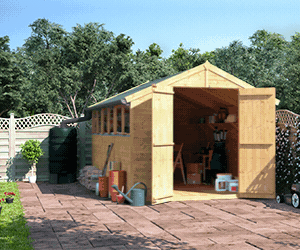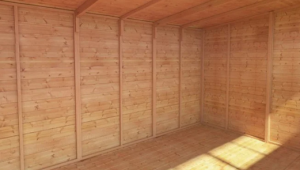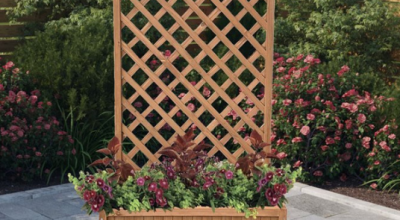Jump to:
Rattan furniture has been a beloved addition to homes and gardens for generations. But it may require occasional repairs to maintain its beauty and extend its lifespan.
If you own this outdoor piece, you’ve come to the right place! In this guide, we will help you restore and repair rattan furniture like a pro. Read on, and you’ll soon be able to revitalise your investment with confidence and pride!
Assessing the Damage

Assess the extent of damage so you can plan and execute the most effective repair strategy. To identify common issues, closely inspect for loose strands or any broken weaves. Also, pay attention to signs of structural damage, such as cracked or damaged legs and arms. If overlooked, these can compromise the furniture’s functionality.
To tackle these issues effectively, gather the necessary tools and materials. Generally, these include the following:
- replacement rattan strands
- high-quality adhesive or glue
- clamps
- sandpaper for smoothing surfaces
- a matching stain or paint to blend the repaired areas with the rest of the garden furniture
Having the right equipment will streamline the repair process. Most importantly, ensuring impressive results that stand the test of time.
Preparing for Repair
Gather all the needed tools and materials to ensure a smooth and successful process. Here’s a list to get you started:
- Purchase rattan strands that match the size and colour of the existing ones.
- Invest in a reliable adhesive designed for rattan repair to ensure strong bonds.
- Clamps are essential for holding loose or broken rattan in place. Meanwhile, the glue sets and ensures a secure and tidy repair.
- Prepare the damaged areas by sanding them with sandpaper. This will help achieve a smooth surface before starting the repair.
- Check if your rattan outdoor pieces require refinishing. If so, opt for a matching stain or paint that complements the original colour.
Work in a well-ventilated area to avoid inhaling fumes from adhesives or finishes. Wear protective gear, such as gloves and safety goggles, to protect your hands and eyes.
Fixing Loose Strands

Tightening and securing loose strands restore the stability of your rattan sofa sets. Here’s a step-by-step guide to help you achieve a seamless repair:
- Inspect the furniture thoroughly to locate any loose rattan strands. Gently press on the weaving to detect areas that may have weakened over time.
- Next, apply a small amount of high-quality rattan adhesive or glue to the loose ends of the strands.
- Realign the loose strands back into their original positions. Use your fingers to press the strands firmly together. Ensure they adhere to one another and the underlying structure.
- If the loose strands are challenging to secure, use clamps to hold them while the glue sets. Be sure to position the clamps carefully to avoid any damage to the surrounding weave.
- Allow the glue to dry completely before removing the clamps (if used).
- To blend the repair with the original weave, sand the repaired area lightly. This helps smooth out any uneven edges and ensures a more consistent appearance.
Repairing Broken or Damaged Weaves

Follow these steps to repair broken weaves effectively:
- Thoroughly inspect the rattan furniture to identify any broken weaves. Look for gaps or areas where the weaving pattern is disrupted.
- Gently remove the broken or damaged rattan strands using small pliers or tweezers. Take care not to damage the surrounding weave during this process.
- Measure the length needed for the replacement rattan strands and cut them accordingly. Soak the new strands in water for about 30 minutes to make them pliable and easier to work with.
- Begin weaving the replacement strands into the existing pattern. Start from one end and carefully interlace the new strands. Make sure they follow the same weaving pattern as the original.
- As you progress, apply a thin adhesive layer to the ends of the new rattan strands. Do so before tucking them securely under the adjacent weaves.
- Allow the adhesive to dry completely. Secure the new strands in place and reinforce the broken weave.
Repairing Structural Damage
If you encounter broken legs, arms, or support frames, follow these steps:
- Carefully examine the extent of the structural damage to find the best course of action.
- Use sturdy adhesives designed for rattan furniture to bond the broken parts securely.
- Consider reinforcing the repaired areas with extra rattan strands for added stability.
- While the adhesive sets, provide support using clamps or makeshift braces. This will help maintain alignment and prevent further stress on the repaired sections.
Sanding and Finishing
After completing the repairs, achieve a smooth finish to restore its original beauty. Here’s how to do it:
Sanding
Once the adhesive has dried, use fine-grit sandpaper to sand the repaired areas gently. Sand in the direction of the weave to avoid damaging the rattan. This process smooths any rough edges, ensuring a cohesive surface.
Matching stain or paint
Apply a matching stain or paint to blend the repaired sections with the rest of the furniture. Choose a treatment that closely matches the original colour. Follow the manufacturer’s instructions for application.
Round-up
Congratulations, you’ve successfully learned how to rattan garden furniture like a pro! With this newfound skill, you can now preserve the charm of your patio garden pieces for years to come. Next, discover how to store your rattan garden furniture when not in use or during winter.
Shop Rattan Garden Furniture












What do you think ?